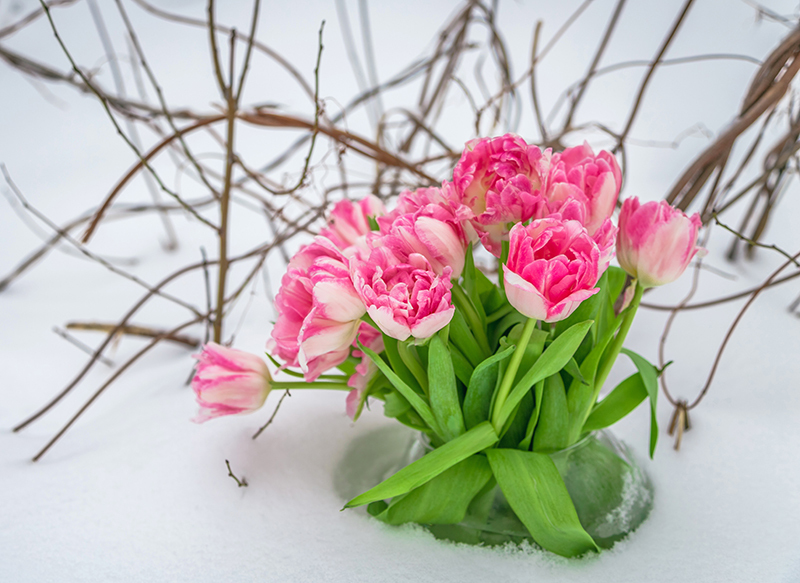Guide to Keeping Your Cut Flowers Vibrant
Posted on 13/08/2025
Guide to Keeping Your Cut Flowers Vibrant
Fresh cut flowers have a magical way of transforming any space into a lively, welcoming environment. Whether it's a bouquet from your garden, a thoughtful gift, or a cheerful pick-me-up, you'll want to preserve that gorgeous vibrancy for as long as possible. If you've ever wondered how to keep cut flowers looking beautiful and full of life, this comprehensive guide provides essential tips, techniques, and science-backed advice. Read on for easy-to-follow steps to ensure your flowers remain radiant for days, or even weeks!
Understanding the Life Cycle of Cut Flowers
Appreciating cut flower care begins with understanding their natural life cycle. Once flowers are cut from their root source, they lose access to the nutrients and water supplied by the plant. From that moment, the clock starts ticking, and it's up to you to maximize their lifespan. Keeping your cut flowers vibrant involves combating natural processes like dehydration, bacteria growth, and nutrient depletion.
Why Do Cut Flowers Wilt?
- Lack of water: Flowers quickly lose moisture through their petals and leaves.
- Bacteria buildup: Microorganisms in the water clog stems, reducing water uptake.
- Starvation: Once severed, flowers can't replenish nutrients unless you provide them.
- Improper environment: Temperature changes and direct sunlight accelerate wilting.

Essential Supplies for Flower Care
Before arranging your fresh cut flowers, prepare the right tools and materials. You will need:
- Sharp, clean scissors or floral shears
- A clean vase
- Room-temperature water
- Flower food or preservation solution
- Bleach, vinegar, or sugar (optional, for homemade preservatives)
Step-by-Step: How to Keep Cut Flowers Fresh and Vibrant
1. Clean Everything First
Bacteria is the #1 cause of early bloom demise. Always start by thoroughly washing your vase, tools, and hands. Use hot water and a mild detergent, or a diluted bleach solution, to remove residue and germs. Rinse thoroughly to ensure no lingering chemicals harm your flowers.
2. Use the Right Water Temperature
Water temperature matters! Cool water is typically best for most cut flowers, as it slows decay and helps blooms absorb moisture efficiently. However, for flowers with tight buds, like roses or tulips, lukewarm water can gently encourage them to open.
3. Trim the Stems Properly
- Cut at a 45-degree angle to increase surface area for water absorption.
- Trim 1-2 inches off each stem underwater if possible--this prevents air bubbles obstructing water uptake.
- Repeat every 2-3 days for maximum vibrancy.
4. Remove Leaves Below the Waterline
Any leaves submerged in water will decay and promote bacterial growth. Remove all foliage that would sit beneath the vase's water level to keep the arrangement, and your water, fresh.
5. Feed Your Flowers
Commercial "flower food" packets usually accompany store-bought bouquets. These contain a mix of sucrose (sugar for energy), biocides (to fight bacteria), and acidifiers to maintain optimal pH. Don't have a flower food packet? Make your own!
Homemade Flower Preservative Recipe:- 2 tablespoons lemon or lime juice
- 1 tablespoon sugar
- 1/2 teaspoon household bleach
- 1 quart (~1 liter) lukewarm water
Mix and add to your vase for a quick, effective substitute. Some florists also recommend a splash of apple cider vinegar or aspirin in a pinch.
6. Arrange with Space
- Arrange flowers loosely! Crowded stems reduce air circulation and increase the risk of mold and rot.
- Aim for ample breathing room to help every bloom stay open and lively.
7. Keep Flowers Out of Direct Sunlight and Heat
Excess heat will sap moisture and force flowers to age faster. Place your vase in a cool, shaded spot away from drafts, appliances, or direct sunlight. Even a windowsill can be too hot for some sensitive flowers!
8. Change The Water Regularly
- Every two days: empty the vase, rinse thoroughly, refill with clean preservative water, and retrim stems for ongoing freshness.
- This simple habit is the single best way to keep cut flowers bright and long-lasting!
Flower-Specific Care Tips
Roses
- Use lukewarm water to encourage buds to open and remain soft.
- Remove all thorns and lower leaves for optimal cleanliness.
- If blooms droop, re-cut stems and submerge entire rose in water for up to an hour.
Tulips
- Prefer cold water--place ice cubes in the vase daily.
- Stand stems upright; tulips continue to grow after cutting!
- A needle prick through the stem just below the flower head can reduce bending.
Lilies
- Remove pollen anthers to prevent staining and prolong life.
- Keep away from ripe fruit--the ethylene gas ripening fruit produces speeds up wilting.
Hydrangeas
- Dip stem tips in boiling water for 30 seconds before arranging to reduce wilting.
- Mist flower heads daily--hydrangeas absorb moisture through petals too.
Wildflowers and Mixed Bouquets
- Be aware that different flowers have different water and temperature needs--separate very delicate or thirsty blooms if possible.
- Trim all stems together daily. Remove expired flowers promptly to prevent spread of bacteria.
Common Mistakes When Caring for Cut Flowers
Even the best intentions can sometimes lead to quick wilt or mold. Avoid these top mistakes to keep cut flowers fresh:
- Using dirty vases or tools
- Placing flowers in very hot or very cold rooms
- Neglecting to trim stems before arranging
- Letting leaves or petals sit in water
- Not changing the water or preservative
- Leaving dead flowers in the arrangement
Advanced Techniques for Keeping Cut Flowers Vibrant for Longer
1. Reviving Drooping Flowers
Some blooms (like roses or hydrangeas) can be "shocked" back to vibrancy. If flowers look limp:
- Trim stems at an angle under water.
- Place flowers in a deep bowl of lukewarm water, submerging completely for 30-60 minutes.
- Return to vase with fresh solution.
This can restore stunning vitality for another day or two!
2. Use of Cleanliness and Sterilization
- Adding a few drops of bleach or clear vinegar can help prevent bacteria growth.
- Rinse the vase with boiling water between uses for extra cleanliness.
3. Cutting Flowers At The Right Time
- Pick flowers in the morning or late evening when they are well hydrated and coolest.
- Avoid cutting during the heat of the day, as stems may be dry and wilt faster.
4. Remove Wilting Flowers Immediately
A dying flower releases ethylene, which "signals" others to decay. Remove spent blooms as soon as you notice drooping or discoloration to protect the rest of your arrangement.
FAQs on Keeping Your Cut Flowers Vibrant
- How often should I change the water?
- Every 2 days (or daily, in hot weather) for optimal results.
- Does aspirin help cut flowers last longer?
- Some people find that crushed aspirin in the vase keeps the water slightly acidic and fresh, but commercial flower food is still the gold standard.
- Can I refrigerate my flowers overnight?
- Yes! Place your vase in the fridge (if it fits) to extend lifespan. Just don't let petals touch cold surfaces or you risk chilling damage.
- Is it bad to mix different types of flowers?
- Not at all--mixed bouquets are beautiful! Just remember that some flowers, like daffodils, exude sap that can harm other blooms. Let problematic stems "bleed out" in water for an hour on their own before mixing into bouquets.

Maintaining Your Cut Flowers' Vibrancy: Quick Troubleshooting
If your flowers seem to wilt quickly, check these factors:
- Are there leaves in the water? Remove them!
- Is the water cloudy or slimy? Change it immediately and clean the vase.
- Are you using the right type of water (not too hot/cold)?
- Did you cut stems recently, at an angle?
- Is your vase clean enough?
By following this guide, you'll discover that keeping your cut flowers vibrant and healthy isn't a mystery--it's a delightful, rewarding ritual!
Final Thoughts: Enjoy Your Radiant Blooms
Whether you buy, receive, or pick them yourself, fresh cut flowers are a gift that deserves extra care. With these tips and a little attention, you'll keep your arrangements bursting with color and fragrance for as long as possible. Experiment with different flowers, preservative recipes, and detailed care routines--and soon, caring for cut flowers will become second nature.
Remember: Keeping cut flowers vibrant is about cleanliness, hydration, and smart placement. Try out these best practices, and your home will always feel bright, alive, and welcoming--one bouquet at a time.
Share this comprehensive guide with friends or bookmark for easy reference the next time you bring home a fresh bouquet. Wishing you many days of beautiful blooms!
Latest Posts
12 Stunning Blooms Known for Longevity
Unwrap Joy: Best Flower Arrangements for Birthdays
Make Your Poinsettias Thrive Through the Holidays
Guide to Keeping Your Cut Flowers Vibrant
Stress-Free Greenery: Top Office Plants for Busy Professionals







